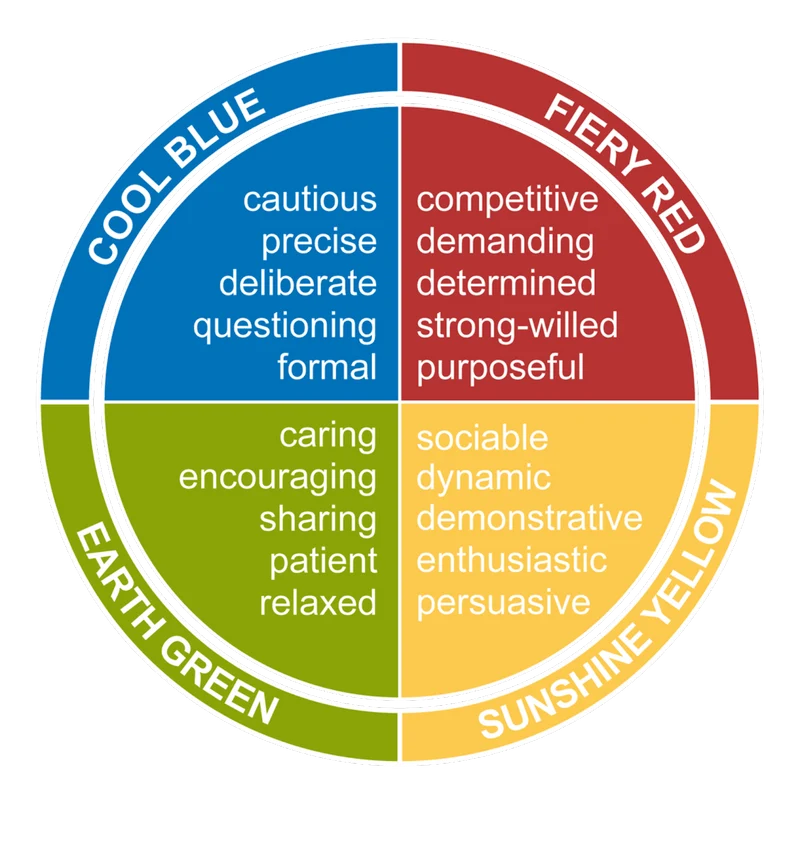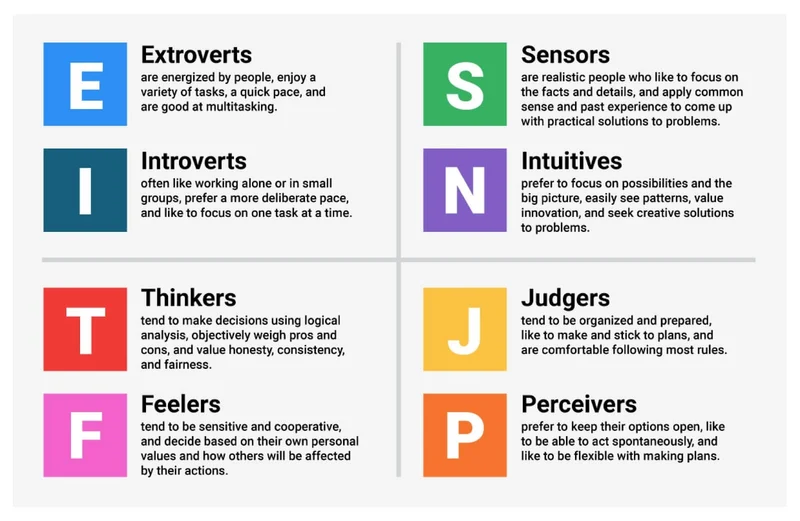Effective communication in the workplace is vital for a company's success. However, communication preferences vary from person to person. Each individual has their own way of being approached, praised, and given feedback.
To streamline communication, you can categorize individuals by their personalities and communication styles. This awareness is crucial during performance reviews, brainstorming sessions, and other key interactions. If part of your team, like Human Resources, is outsourced, maintaining productive communication becomes even more important.
Understanding and adapting to these different communication styles can enhance overall workplace well-being and productivity.
Why is it Important to Identify Communication Styles?
There is not a one-size-fits-all approach when it comes to communication, no matter the situation — but this is especially true in the workplace. Different types of people respond differently to certain communication methods, and it’s essential to learn how to best speak with your employees if you want them to thrive.
Certain individuals appreciate blunt, to-the-point feedback — others will not respond so well. When you’re aware of your peers’ communication styles, it’ll be easier to resolve workplace disputes and better collaborate with one another.
Speaking of awareness, Forbes discovered that 90% of top performers are highly self-aware and possess great emotional intelligence. If you want to be a great leader, you need to understand yourself before you can begin to understand those around you.
Swiss Psychologist Carl Jung pioneered many of the modern-day personality tests we use today. He looked at both attitudes (introversion or extraversion) and cognitive functions (thinking, feeling, sensation, and intuition). From his findings, both Insights Discovery and Myers-Briggs Type Indicator assessments were formed.
As Jung famously said, “Every individual is an exception to the rule…Conformity is one side of a man, uniqueness is the other.” Just remember, people are unique individuals — personality types and communication styles are simply a way to better understand them, not define them.
Using Insights Discovery Assessment in the Workplace
There are several different models or tests you can analyze to determine personality type, but one of the most effective to use in the workplace is Insights Discovery. Insights Discovery is a psychometric tool that helps with self-awareness and how to communicate with one another.
This specific tool allows you to understand individuals’ strengths, weaknesses, and communication styles. It’s a 4-color model that, when used by your team, can enhance collaboration and de-escalate conflict and tension.

Fiery Red
Those who identify as a “Fiery Red” personality are often concise and direct, striving for success and expecting the best from those around them. They are striving to be in control and can feel uneasy when there is inefficiency in the workplace around them.
How to best communicate with them:
- Be direct with feedback and questions
- Appeal to their goal-oriented mindset
- Don’t involve emotions
Sunshine Yellow
“Sunshine Yellow” personas are more informal and prefer a casual approach in the workplace. They’re often more open-minded and enjoy engaging with others. These personality types can thrive when they’re not completely restricted by set routines.
How to best communicate with them:
- Be engaging and enthusiastic
- Appeal to their openness to ideas and conversation
- Don’t try to limit them
Earth Green
Individuals who fit best into the “Earth Green” personality category are happiest when there is harmony in the workplace. They also take on a casual approach to situations and try to stay away from confrontation. When they feel appreciated and can sense that others like them, they perform best.
How to best communicate with them:
- Be patient and offer support
- Appeal to their considerate mindset
- Don’t be impersonal or insensitive
Cool Blue
If someone is a “Cool Blue,” they strive for precision and take a problem-solving approach to all situations. These individuals are precise and expect others around them to be the same. If they’re under too much pressure, they may completely withdraw.
How to best communicate with them:
- Be clear and give them their space
- Appeal to their logical mindset
- Don’t approach them flippantly
Insights Discovery 8 Types
Beyond the 4 common color types listed above, there are 8 additional types that are made up of a combination of the colors. These individuals will exhibit their personality type differently depending on the role they’re in — whether that be a management, development, or entry-level position.
- Reformer: Cool Blue + Fiery Red, Extraverted Sensing + Introverted Intuition
- Observer: Cool Blue, Introverted Thinking
- Coordinator: Earth Green + Cool Blue, Introverted Sensing
- Supporter: Earth Green, Introverted Feeling
- Helper: Sunshine Yellow + Earth Green, Introverted Intuition + Extraverted Sensing
- Inspirer: Sunshine Yellow, Extraverted Feeling
- Motivator: Fiery Red + Sunshine Yellow, Extraverted Intuition
- Director: Fiery Red, Extraverted Thinking
Using the Myers-Briggs Type Indicator Assessment in the Workplace
Katherine Briggs and Isabel Briggs Myers created the Myers-Briggs Type Indicator (MBTI) based on Jung’s psychology. Individuals answer a series of questions and are given a personality type that consists of 4 letters.
- Introversion vs. Extraversion: Extroverts replenish their energy by spending time with others and are often more expressive, while introverts recharge with alone time and are typically more reserved.
- Sensing vs. Intuition: Sensors are more practical and hands-on, while intuitives deal more with abstracts and creativity.
- Thinking vs. Feeling: Thinkers are concerned with logic and reason, while feelers make decisions with emotions and take into consideration how it will impact others.
- Judging vs. Perceiving: Judgers are happiest with order and structure, while perceivers appreciate spontaneity.
Based on these 4 categories, you’ll receive a personality type that looks something like INFJ or ESTP.
Rather than take a deep dive into each of the 16 personality options, we’ll explore the 4 temperaments they fall into.

Sensing Feeling
Sensible feelers (SF) are made up of the ISFJ, ISFP, ESFJ, and ESFP personalities. They do best with actions and performance rather than talking. SFs seek harmony and structure. While the extroverted SFs will gravitate more towards building community through socialization, the introverted SFs are better suited to mediating and conflict resolution.
How to best communicate with them:
- Be supportive and encouraging
- Appeal to their feelings
- Don’t take an insensitive approach
Sensing Thinking
Sensible thinkers (ST) are made up of the ISTJ, ISTP, ESTJ, and ESTP personalities. These individuals love organizing and keeping things running systematically. They respond best to directness, goals, and deadlines. STs like seeing results and taking action.
How to best communicate with them:
- Be specific and clear
- Appeal to their ambition and goal-setting
- Don’t offer vague solutions or instructions
Intuition Feeling
Intuitive feelers (NF) are made up of the INFJ, INFP, ENFJ, and ENFP personalities. NFs are happiest empowering others and feeling useful. In the workplace, you’ll find them recognizing issues and going out of their way to solve them. They implement their creativity into solutions and are very forward-thinking.
How to best communicate with them:
- Be positive and personal with feedback
- Appeal to their intuition and problem-solving skills
- Don’t give them generic paise
Intuition Thinking
Intuitive thinkers (NT) comprise the INTJ, INTP, ENTJ, and ENTP personalities. They are great problem solvers and driven when it comes to their work. NTs are usually not found staying still, as they are constantly looking to clarify things and make systems better.
How to best communicate with them:
- Be reasonable and open to change
- Appeal to their intellect
- Don’t limit or underestimate them
.svg)




